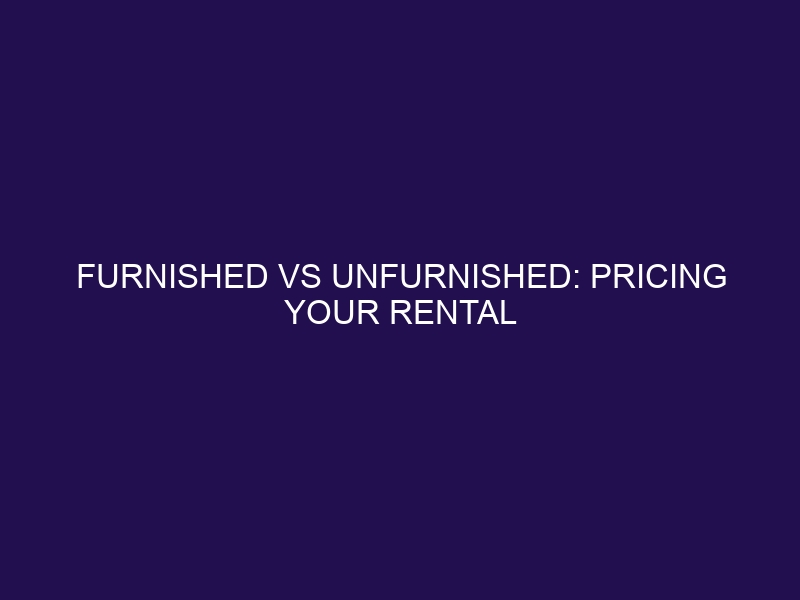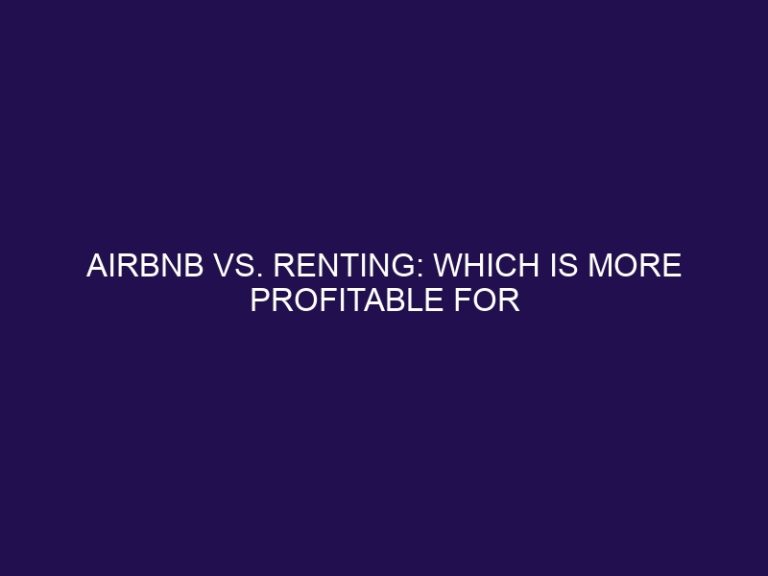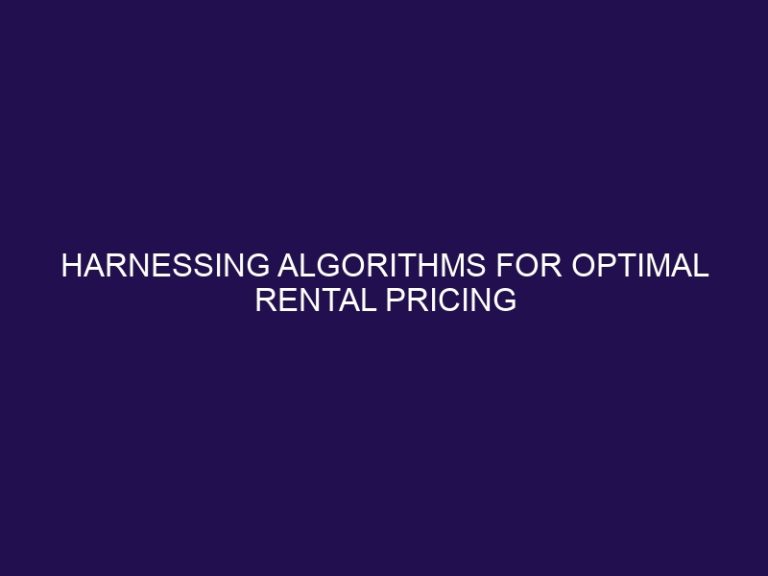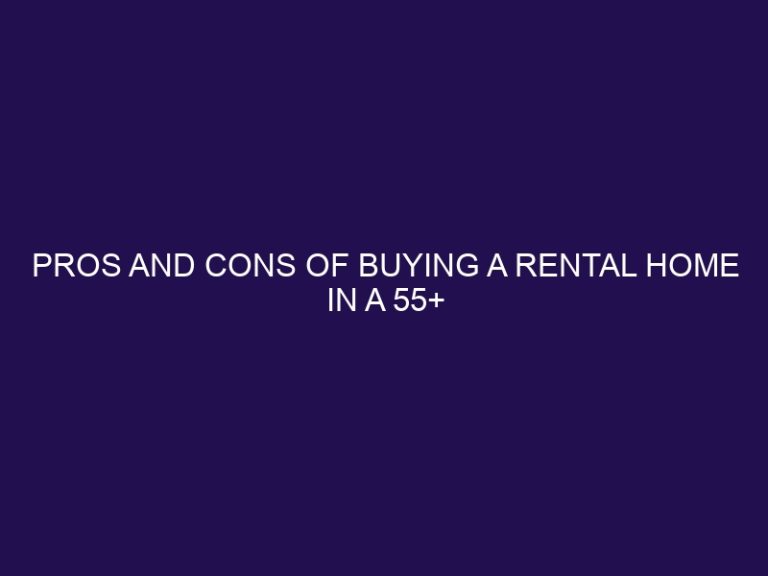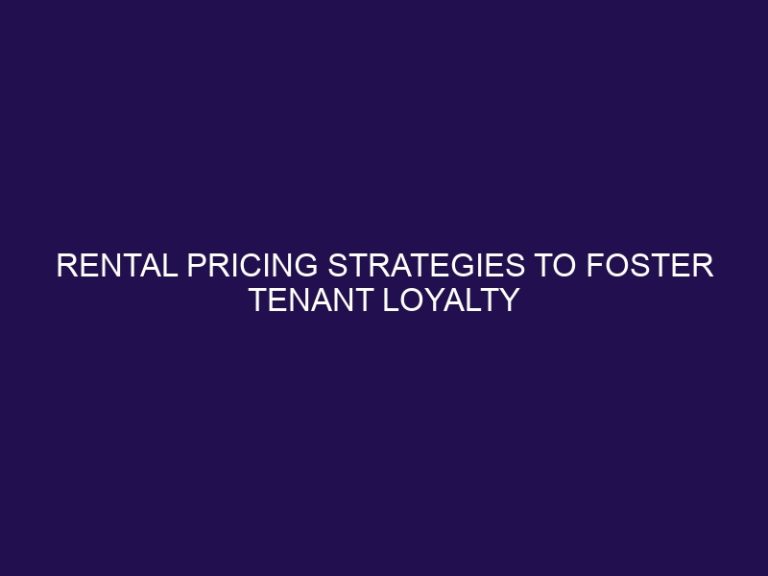Furnished vs Unfurnished: Pricing Your Rental Right
Whether you’re a landlord looking to rent out your property or a tenant searching for a new place to live, one of the first decisions to make is whether to offer the property as furnished or unfurnished. There are benefits and drawbacks to both options, and understanding the factors that affect the pricing of each type of rental is crucial in making the right choice.
Furnished rentals are a type of rental property that comes with furniture, appliances, and other necessary items for daily living. On the other hand, unfurnished rentals are typically empty, with no furniture or appliances provided.
There are pros and cons to both furnished and unfurnished rentals:
Pros of Furnished Rentals:
- -Ready for immediate move-in
- -Convenient for short-term or temporary living situations
- -More appealing to international or out-of-state renters
Cons of Furnished Rentals:
- -Higher initial investment for furnishings
- -Additional costs for upkeep and replacement of furniture
- -Potential for damage or wear and tear on furnishings
Pros of Unfurnished Rentals:
- -Lower initial investment for landlords
- -Less maintenance and upkeep for landlords
- -Renter has the freedom to personalize the space
Cons of Unfurnished Rentals:
- -Requires the renter to have their own furniture and appliances
- -Not suitable for short-term or temporary living situations
- -Less appealing to international or out-of-state renters
When determining the pricing for your rental, there are several factors to consider:
- Location: Properties in desirable areas or with convenient access to amenities will typically command higher prices.
- Amenities: Properties with desirable features such as a pool, gym, or in-unit laundry will generally have a higher rental value.
- Size and Layout: Larger properties or those with multiple bedrooms will naturally have a higher rental value.
- Demand: The current rental demand in the area will influence the price of the rental.
To determine the right price for your rental, it’s essential to research comparable rentals in your area, consider your expenses, and evaluate the market demand. For furnished rentals, you may also need to factor in additional costs for furniture and upkeep. By understanding these factors, you can set a competitive price that will attract potential tenants and maximize your rental income.
In conclusion, whether you choose to offer a furnished or unfurnished rental, carefully considering the pros and cons and the factors that affect pricing will help you make an informed decision and set the right price for your property.
What Is the Difference Between Furnished and Unfurnished Rentals?
Furnished rentals come with furniture and essential household items, while unfurnished ones do not. Furnished apartments are convenient for short-term leases, while unfurnished ones offer more personalization options and lower rent.
In the nineteenth century, Europe saw a clear distinction between furnished and unfurnished rentals. Furnished rentals were popular among the aristocracy, displaying opulent furnishings and artwork, while the middle class preferred unfurnished rentals for their affordability and flexibility.
What Are the Pros and Cons of Furnished Rentals?
When it comes to renting out your property, one of the biggest decisions you’ll have to make is whether to offer a furnished or unfurnished rental. Both options have their own advantages and disadvantages, and it’s important to weigh them carefully before deciding. In this section, we’ll take a closer look at the pros and cons of furnished rentals, so you can make an informed decision on how to price your rental. From convenience to cost, we’ll cover all the key factors to consider.
Pros:
Furnished rentals offer convenience, saving on the cost and effort of furnishing a space. They attract short-term tenants and provide flexibility.
Unfurnished rentals, on the other hand, allow for personalization, long-term stability, and lower maintenance. Both options cater to different tenant needs and investment goals.
Cons:
Negatives of unfurnished rentals can include:
- Higher initial costs for tenants.
- The need to purchase furniture.
- Limited flexibility for short-term stays.
- Higher maintenance.
- A narrower pool of potential tenants.
What Are the Pros and Cons of Unfurnished Rentals?
When it comes to renting out your property, one of the key decisions you need to make is whether to offer it furnished or unfurnished. Each option comes with its own set of pros and cons that can greatly impact the success and profitability of your rental. In this section, we will discuss the advantages and disadvantages of offering an unfurnished rental, so you can make an informed decision on how to price your rental and attract the right tenants.
Pros:
- Convenience: Perfect for short-term stays and students.
- Cost-Efficiency: Saves on furniture expenses.
- Attractiveness: Appeals to tenants looking for move-in ready options.
A friend found a furnished apartment that was ideal for her short work assignment, saving her the hassle of moving furniture. It also fit her budget and convenience needs.
Cons:
- Disadvantages of furnished rentals: Higher rental costs, potential for wear and tear on furniture, limited personalization.
- Disadvantages of unfurnished rentals: Initial higher moving costs, need to purchase furniture, limited short-term flexibility.
What Factors Affect the Pricing of Furnished and Unfurnished Rentals?
When it comes to renting out a property, one of the most important decisions you will make is determining the right price. However, the price of a rental can vary significantly depending on whether it is furnished or unfurnished. In this section, we will delve into the factors that can influence the pricing of both types of rentals. From the location and amenities to the size and layout, we will explore how each aspect can impact the rental price. Additionally, we will discuss the role of demand in determining the value of a furnished or unfurnished rental.
1. Location
- Research the neighborhood’s safety, amenities, and proximity to public transportation.
- Evaluate the neighborhood’s reputation and desirability for potential tenants.
- Analyze the rental demand and market trends in the specific location.
2. Amenities
Amenities in rental properties can vary from essential necessities to luxurious additions, affecting the price and attractiveness of the rental. Some examples of amenities include:
- High-speed internet
- In-unit laundry
- Gym access
- Parking spaces
The inclusion of these sought-after amenities can greatly influence the desirability and value of a rental property.
3. Size and Layout
- Assess the square footage and room configuration to determine if the rental meets your size and layout needs.
- Consider the functionality of the layout for your lifestyle and furniture arrangement.
- Evaluate the size and layout for potential future changes or expansions.
Did you know? The average size of a studio apartment in the US is around 500 square feet.
4. Demand
- Evaluate the current demand for rentals in the specific location.
- Assess the demand for both furnished and unfurnished rentals separately to gain insight into market preferences.
- Analyze seasonal variations in demand to effectively optimize rental pricing and occupancy rates.
In 2018, the demand for unfurnished rentals saw a surge, primarily due to an increase in preferences for long-term leasing.
How to Determine the Right Price for Your Furnished or Unfurnished Rental?
As a landlord, determining the right price for your rental property can be a challenging task. Whether you are offering a furnished or unfurnished rental, there are several factors to consider in order to set the most competitive and profitable price. In this section, we will discuss the key steps to take when determining the right price for your rental, including researching comparable rentals, evaluating market demand, and factoring in expenses and additional costs for furnished rentals. By following these guidelines, you can ensure that your rental is priced appropriately and attracts the right tenants.
1. Research Comparable Rentals
- Utilize online rental platforms to research comparable properties in your area.
- Compare rental rates, amenities, and property features to accurately gauge market value.
- Consider factors like location, size, and included utilities for thorough analysis and accurate comparisons.
- Consult with local real estate agents for additional insights and advice.
When researching comparable rentals, it is important to thoroughly analyze and determine competitive pricing in order to attract potential tenants.
2. Consider Your Expenses
- Assess recurring costs such as mortgage, property taxes, insurance, and maintenance.
- Consider one-time expenses like furnishings, repairs, and property upgrades.
- Factor in vacancy costs and potential rental income fluctuations.
2. Consider Your Expenses
3. Evaluate the Market Demand
- Analyze the demand for rentals in your area, taking into account factors such as population growth and job opportunities.
- Assess the vacancy rates for rentals to determine the level of competition in the market.
- Conduct research on rental listings to gain insight into the types of properties that are in demand and their corresponding prices.
4. Factor in Additional Costs for Furnished Rentals
When considering furnished rentals, it is important to factor in additional costs such as furniture maintenance, replacement, and insurance. These expenses can add up, as furnished rentals may also require higher cleaning and utility fees. It is also wise to budget for potential repair or replacement costs for any wear and tear on furniture and appliances.
How Can You Maximize Your Rental Income with Furnished or Unfurnished Rentals?
- Assess Demand: Research local market trends to determine the demand for furnished or unfurnished rentals.
- Cost Analysis: Calculate the potential income versus upfront costs for furnishing your rental.
- Target Audience: Tailor your rental to appeal to specific demographics, such as students, professionals, or families.
Pro-tip: Consider offering a partially furnished option to attract a wider range of potential tenants.
Frequently Asked Questions
What is the difference between furnished and unfurnished rentals?
Furnished rentals come with basic furniture and household items, while unfurnished rentals are empty and require the tenant to provide their own furnishings.
What are the main pros and cons of offering a furnished rental?
Pros: Higher rental income, shorter vacancy periods, and a diverse renter pool. Cons: Higher upfront costs, more maintenance and repairs, and limited tenant personalization.
Are there any specific tenant preferences that should be considered when deciding between furnished and unfurnished rentals?
Yes, tenant preferences have shifted over time and may vary depending on factors such as location, target market, and type of rental. Professional management companies can provide valuable insights in this regard.
What are some common items included in a furnished rental?
Some basic big pieces often found in furnished rentals include a bed frame, mattress, sofa, side table, and dining set. Additional items may include kitchen appliances, small appliances, and cleaning supplies.
Is it possible to charge a premium for a furnished rental?
Yes, tenants are often willing to pay more for the convenience of a fully furnished rental, which can result in a higher rental income for property owners.
How can a professional management company assist in the decision between offering a furnished or unfurnished rental?
Professional management companies have experience and knowledge in the rental market and can provide advice on tenant preferences, investment strategies, and the potential benefits and drawbacks of each option. They can also handle the set up and maintenance of a furnished rental, saving the property owner time and effort.

